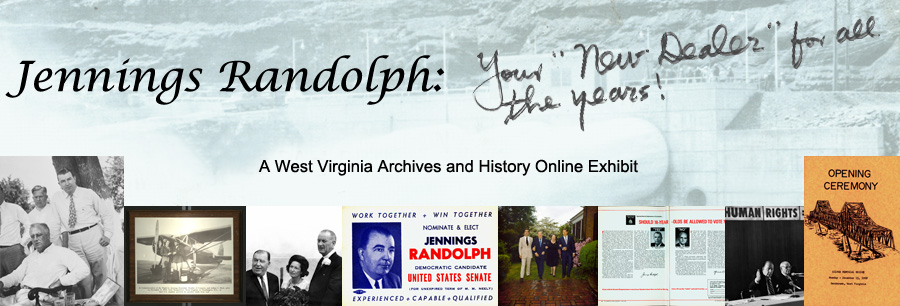
Chapter Seven
|
"It's been a happy road. I have no regrets . . . ." - Jennings Randolph |
|
After a lengthy and productive career, Jennings Randolph, then in his early eighties, left office in January 1985. The political legacy he left behind included victories such as providing economic opportunities to the blind and handicapped, lowering the voting age to eighteen, developing the Interstate Highway System, improving education across the nation, and so much more.
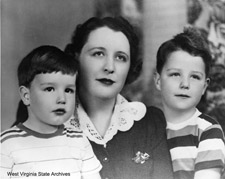
Mary, Jay, and Frank Randolph
|
As important as the legacy of his political achievements, Jennings Randolph left behind a second legacy: his family. In 1933, Randolph married Mary Babb of Keyser, West Virginia. Out of this marriage came two sons, Jennings Jr. (Jay) and Frank. Jennings and Mary remained together until Mary’s passing in 1981. She, Jay, and Frank were very active in Jennings Randolph’s political career, attending a variety of festivities and events with him throughout the years.
|
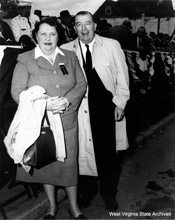
Jennings and Mary Randolph at Mountain State Forest Festival, 1969
|
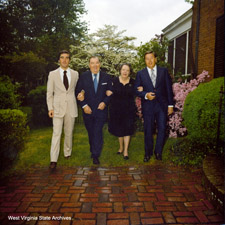
Randolph Family Photo
|
| After his wife passed away from cancer in 1981, Randolph became very active with the American Cancer Society. In 1982, he received a plaque from the society in recognition of his efforts. West Virginia University named its cancer center the Mary Babb Randolph Cancer Center in honor of Mary Randolph.
|
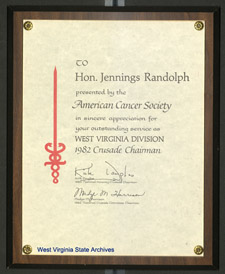
Plaque Jennings Randolph received from the American Cancer Society
|
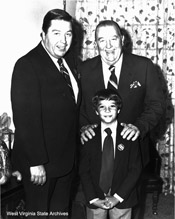
Jennings Randolph with Jay Randolph and Jennings Randolph III.
|
Following in the footsteps of their father, Jay and Frank Randolph both grew to be successful men. Jay became a sportscaster, covering games for teams such as the St. Louis Cardinals, the Cincinnati Reds, and the Florida Marlins.1 Frank became an interior designer and remained in Washington, D.C., having designed for clients such as Vice President Dick Cheney.2 Jennings Randolph also had three grandchildren, Jennings (Jay) Randolph III, Brian Randolph, and Rebecca Randolph.
|
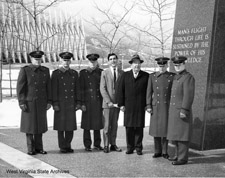
Jennings Randolph with Frank Randolph, West Virginia cadets, Air Force Academy
|
After leaving the Senate in 1985, Randolph remained in Washington, working as a consultant.3 He kept close ties to Salem, particularly with Salem College. Later, he moved to St. Louis, where he died on May 8, 1998.
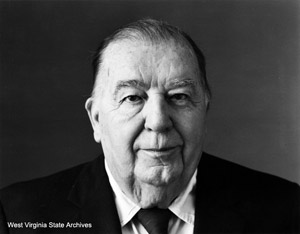
Portrait of Jennings Randolph
In 2005, West Virginia Archives and History received the senatorial papers of Jennings Randolph from Salem-Teikyo University (now Salem University). Since then, the collection has undergone extensive processing that has made it an accessible and beneficial resource for the public.
Citations
1. "Jennings Randolph, Former U.S. Senator, New Dealer, dies at 96," The Journal, Martinsburg, West Virginia, May 9, 1998
2. Sally Brady, "Well-Lived: Georgetown Town House: Frank Babb Randolph Combines Jeffersonian Classicism with Contemporary Art," Veranda, https://www.veranda.com/decorating-ideas/g823/frank-babb-randolph-interior-design/ (accessed June 19, 2018)
3. "Jennings Randolph, Former U.S. Senator, New Dealer, dies at 96," The Journal
|



